The Fact and the Fiction: Teeth Whitening
Dr. Arti Patel goes through the myths of teeth whitening so you get a better understanding of what is the best way of whitening your teeth if you want to go for it.
In the height of contemporary culture beauty standards have evolved beyond a pretty face and a statuesque frame we are now more and more concerned with the particulars of our appearance and amidst this rising trend we have found an increasing desire to emulate the smiles we see on TV. It is known that having a whiter, brighter smile improves self-confidence, so it is of no surprise that more and more people are turning to teeth whitening. And wherever popularity reigns so do folklores. Below are a few of the most common idioms heard when it comes to teeth whitening.
“White teeth are in fashion”
Absolutely! I mean almost no one would actually choose to have a darker shade of teeth if they were given the choice and most people would definitely opt for a brighter, whiter smile. Ladies, it is like wearing red lipstick with yellow teeth in comparison to the impact with white teeth or even the reason why so many brides are whitening their teeth to match their white wedding dress on their big day. And as for you gentlemen out there, it is similar to having a white set of teeth along your crisp white shirt as opposed to the yellow teeth contrast.


So to an extent, yes “White teeth are in fashion”. However, I don’t believe that this concept will phase out like how fashions pass. Whilst having white teeth appears to be an attractive, confident and a more ‘Hollywood’ smile, it is not in fact a new phenomenon and has been performed using different techniques for decades.
Besides from a cosmetic improvement, a noticeable darkening of teeth can be considered a physical handicap on one’s self-confidence, physical attractiveness as well as employability.1
“Teeth whitening damages your teeth”
FALSE ❌ “Teeth whitening strips a layer of your tooth”
FALSE ❌ “Teeth whitening ruins your teeth”
FALSE ❌ “Teeth whitening damages the enamel (outer layer of your tooth)”
One of the primary concerns my patients seem to have regarding teeth whitening is if the procedure is going to be harmful to their dental health. I completely understand why this may be a concern and barrier, however, let me assure you that the long-term safety of teeth whitening has been established repeatedly; research shows no significant long-term effects associated with professional at-home whitening treatments containing 10%, 16% carbamide peroxide or 6% hydrogen peroxide.2
Professional teeth whitening does not work by stripping any aspect of the tooth or damaging the enamel. Instead, the ingredients penetrate the layers of the tooth (enamel and dentine) and in turn brighten the tooth inside out.
As dentists, it is our job and professional duty to ensure that you have healthy teeth suitable for teeth whitening and that the procedure is performed safely.
“Over the counter kits work just as well”
Be Careful! Taking the dentist out of the equation when dealing with teeth whitening eliminates the safety net. Ingredients in some over-the-counter methods may include acids and abrasives which may cause damage to your teeth.
The legal limit of Hydrogen Peroxide (the agent used for tooth whitening) that dentists can prescribe in the UK is 6%. Regulations vary from country to country but the kits available in Europe contain a maximum of 0.1% Hydrogen Peroxide which is comparably a much lower percentage. So for the short term, these can temporarily do the job, however, the prescribed whitening penetrates the deeper layers of the tooth and therefore the results are more long term.
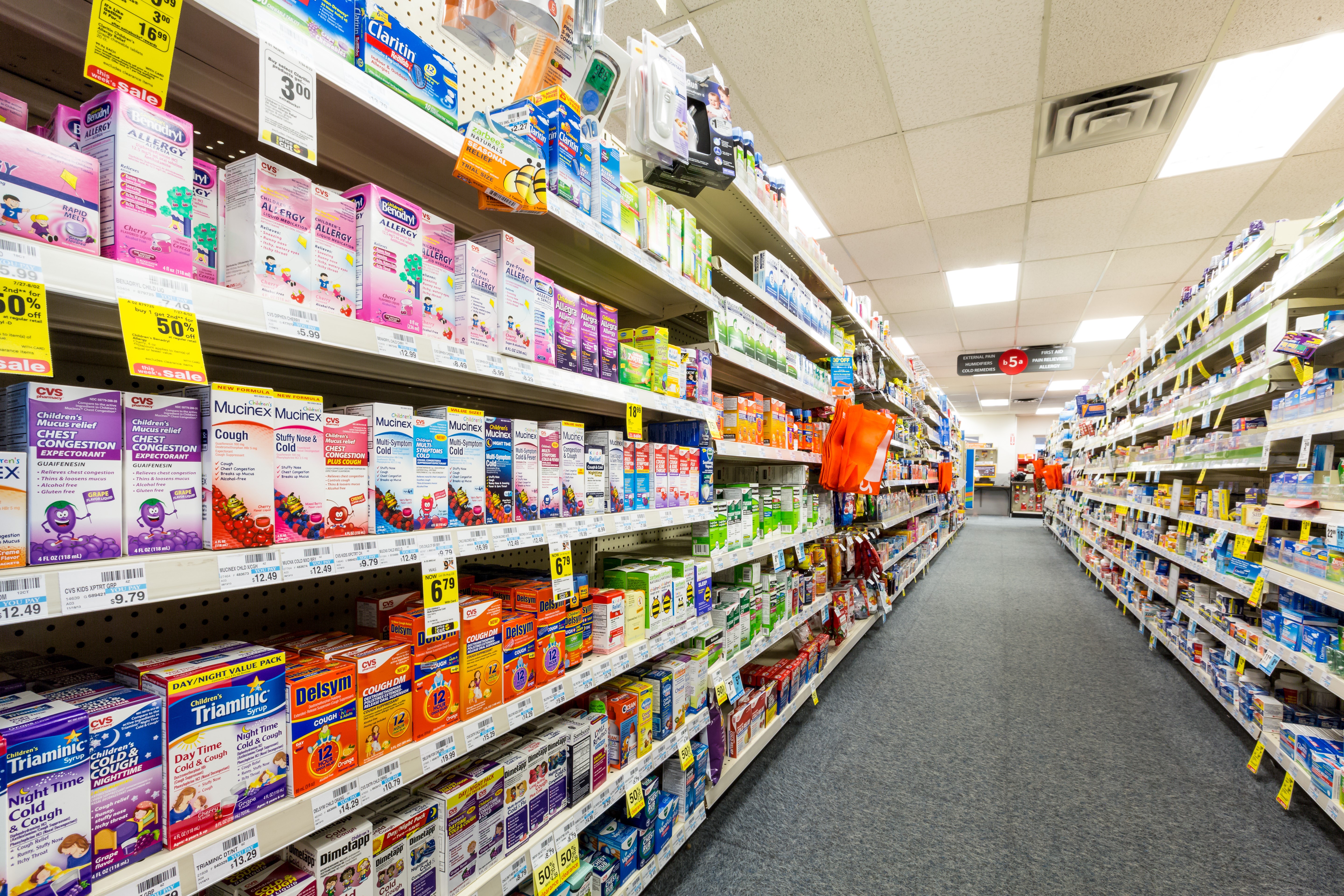
Some social media influencers are endorsed to advertise different systems, most of which are not always prescribed by a dental professional; systems like whitening strips, paint on whitening and UV light systems are considerably cheaper options but their safety risk is not determined and in turn dental safety and effectiveness is less than that of professional whitening.
“I can’t drink teas / coffees / red wine again”
The effect of teeth whitening is less likely to last as long if you smoke or eat or drink products that can stain your teeth.
Of course, the above causes extrinsic staining (surface stains) which reduces the brightness of your teeth, however, that doesn’t mean you can’t drink them. For the maximum effect, I generally advise patients to avoid such staining foods/drinks only DURING the course of whitening unless they are using Enlighten, where diet is irrelevant. With good maintenance, regular visits to the hygienist to remove any stains and following the whitening advice provided to you by your dentist you should be able to continue your diet as normal.
“Whitening toothpastes will do the job”
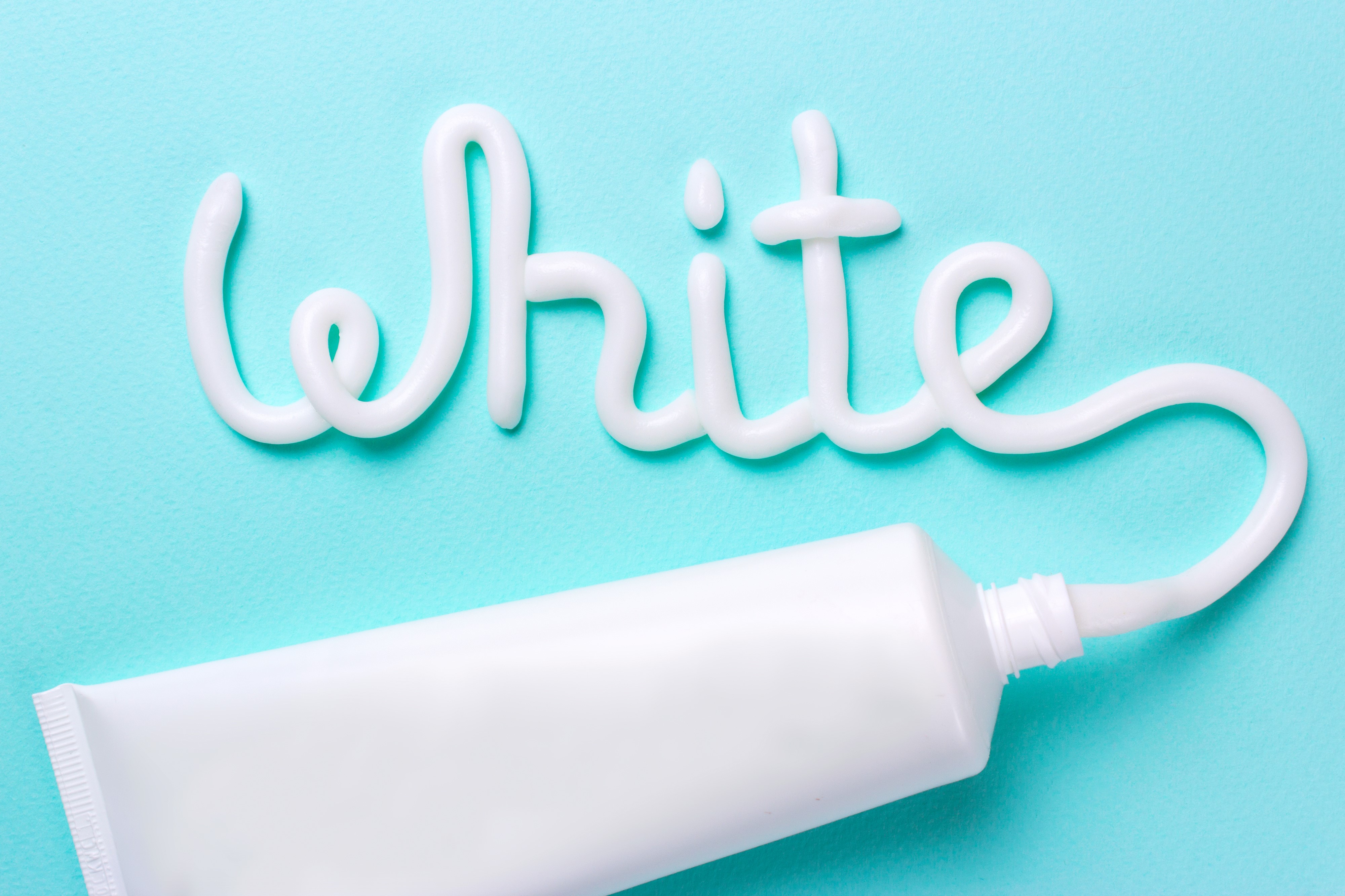
Well, it may to some extent. Personally, I advise most patients to use standard fluoridated toothpaste (like Oral B Pro-expert or Colgate Total) as a lot of whitening toothpastes are abrasive to teeth -not Evo White, but it is sort of an exception- and once you wear your tooth away the lost tooth tissue will never grow back– scary right?! The toothpaste can however help to remove surface stain from teeth and in turn brighten the appearance of them in that way.
“The Sensitive Teeth”
If you already suffer from sensitive teeth, teeth whitening may exacerbate the sensitivity during the course of the treatment. Just because you have sensitive teeth does not mean you cannot whiten your teeth. Your dentist will look out for areas at risk of increased sensitivity prior to starting treatment on you and look after you accordingly.
If you don’t normally suffer from sensitivity, you’re likely to experience some form of it during the whitening process. This is absolutely normal, so don’t be alarmed if you’ve felt some sensitivity; just skip a day and allow your teeth some recovery time.
Remember, the sensitivity is only short term.
Here are some tips to help you conquer the sensitivity:
- Start using a toothpaste for sensitivity 2 weeks prior to commencing your treatment.
- Skip a day to allow your teeth to settle.
- Desensitising varnishes can be painted onto your teeth to reduce sensitivity.
- Chewing sugar free chewing gum can be a good distraction.
- Use a good whitening system that will have a formulation focused on also reducing sensitivity.
“Having my teeth whitened with the blue light is quicker”
You may get bored of me saying this, but if prescribed by a dental professional then yes you can use the ‘blue light system’ because prescribed gels are still being used. However, without the combination with home whitening, the long-term effect is reduced. I generally explain this to my patients as the “Cash Rich Time Poor” option.
If you were to keep your mouth open for an hour and not allow any saliva to touch your teeth, after an hour, with or without the blue light, your teeth will appear whiter. What you’re doing here is DEHYDRATING your teeth which makes them appear whiter and this is not actually a purely whitened result. So what you may see in some exhibitions and shopping centres may appear cheaper and quicker but they aren’t necessarily effective.
“Shopping around for the best deal”
The demand for whitening is sky high. I mean it is probably the most requested dental procedure and it has a massive global market so undoubtedly people are seeking the best deal.
In fact, all prescribed whitening gels will actually whiten your teeth whatever the brand or price as the core ingredient is likely to be the same; they may have differences in specific details or protocols, but they have a shared aim with scientific research behind them.

I strongly believe that you get what you pay for and the same applies to whitening. If something is heavily discounted, I tend to wonder why. In my opinion, the treatment is well worth the cost – you wear your smile every day!
I always discuss with my patients the options available to suit them but never compromise on their end result or in achieving their individual demands.
“Coconut oil pulling, bicarbonate soda, charcoal… the Home Remedies…”
Science VS Nature? These seem to be hot topics for home remedies in the recent months/years.
I find that for the last year and potentially even longer, there has been a lot of writing about oil pulling and this may or may not help to remove plaque/bacteria in some ways, but it does not whiten teeth any more than swishing your mouth with water or mouthwash.
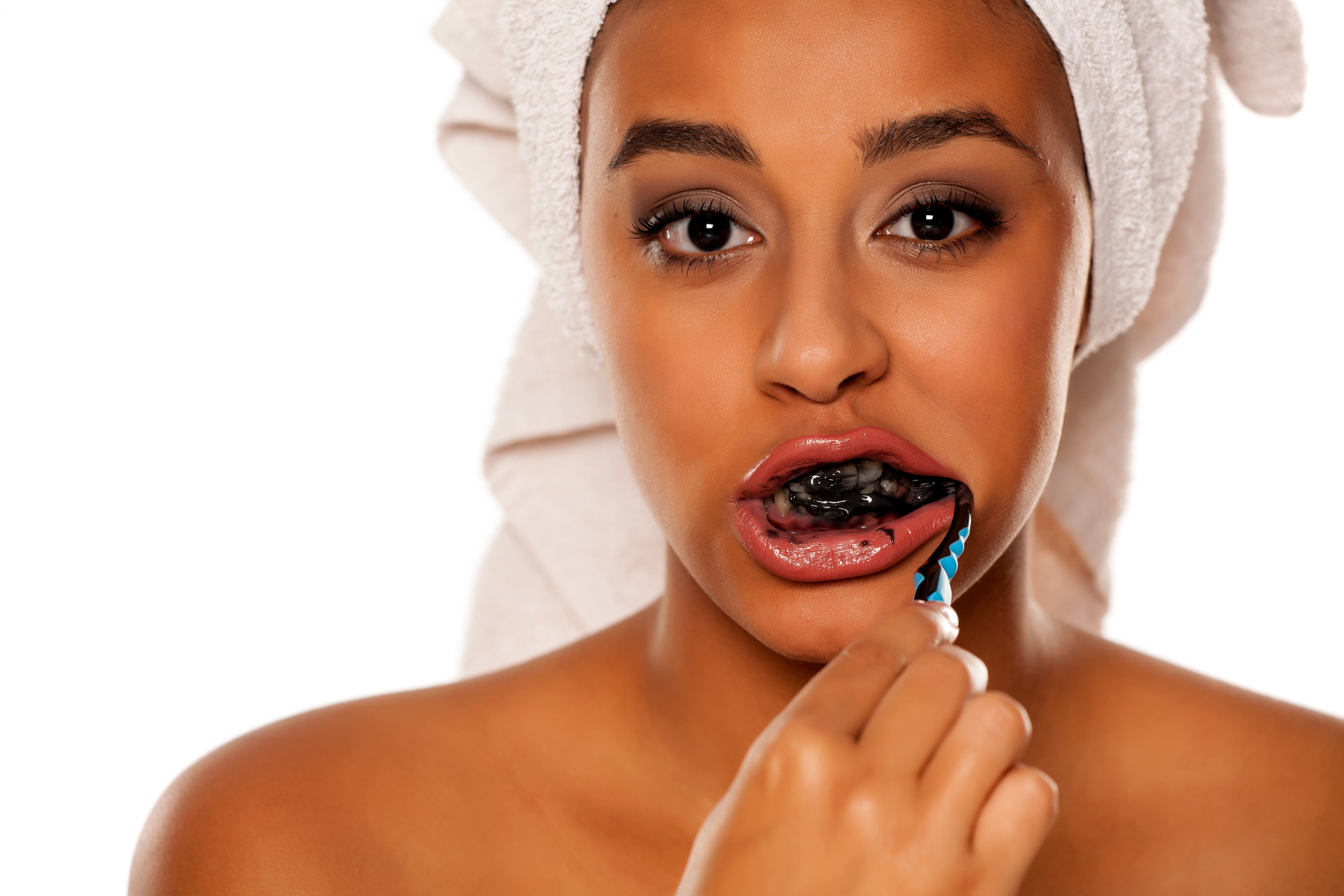
Bicarbonate soda is a versatile ingredient and has endless uses from kitchen cleaning and cooking to removing stubborn carpet stains and neutralising odours. Teeth-wise however, it may do a fabulous job in lifting the red wine or coffee stains from the tooth surface, as will charcoal toothpaste, but they are abrasive so they can wear your teeth – I hope you haven’t already forgotten the point that tooth tissue will never grow back once it wears away. And well, if you have, here’s a reminder!
The real question is, do you really want to brush bicarbonate soda or charcoal onto your teeth?
We don’t want beautiful teeth at the expense of unhealthy teeth so I would suggest sticking to what is proven.
“Teeth whitening does not last”
What does forever mean to you? I initially whitened my teeth 9 years ago and even though I’ve topped them up over the years, they have never relapsed to the shade they were prior to whitening. With first-hand experience, to me it has always been well worth it.
As might be expected, with our choice of beverages and foods our teeth can discolour and not appear as bright as they once were. It is in fact very easy to keep your whitened teeth ‘topped up’ once you’ve had the trays custom fitted to your teeth; you’d simply wear your trays for a night or 2 as advised with your specific whitening protocol. It really is that simple! More regular top up, for instance once a month, keeps the teeth continuedly white.
You may be looking for a method to brighten your smile and one or more of the above myths may have been your barrier to proceeding.
During routine examinations or consultations with my patients, we decide upon their expectations and desires. There are many effective whitening systems and I have incorporated Enlighten more into my daily practice as the ‘Apple’ of tooth whitening and a whole package to ensure my patients have the most pleasant journey whitening their teeth.
You Smile, I Smile – that’s how it works.
References
- Haywood VB. The “bottom line” on bleaching 2008. Inside Dentistry February 2008; 2-4.
- Tooth whitening/bleaching: Treatment considerations for dentists and their patients. American Dental Association. ADA Council on Scientific Affairs. September 2010; 3.
› DIG DEEPER ‹

Learn more about mini smile makeovers here.

Or if it’s the Enlighten Teeth Whitening System you want to dig deeper into, then give it a click right here
And to find an Enlighten whitening expert near you, hit the button below.




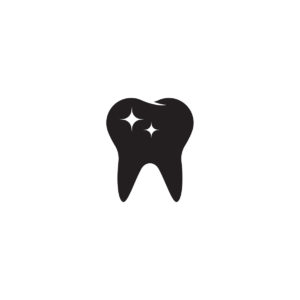

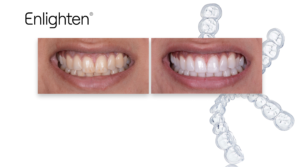
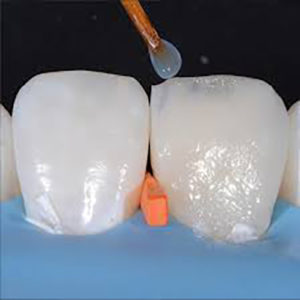


Really informative! Really well written!
Excellent read, I am in the process of having mine done now and I haven’t experienced any sensitivity at all compared to previous gels I have used. My husband just completed his treatment with enlighten smile system and is loving his results.
Many thanks for your comment, Sejal! We are glad your husband is happy with his results. Please keep us posted with yours!! 🙂
Can’t wait to get started on Enlighten with the best dentist ever Dr Arti Patel looking forward to this next week.
‘You smile I smile’’
Great read very informative.